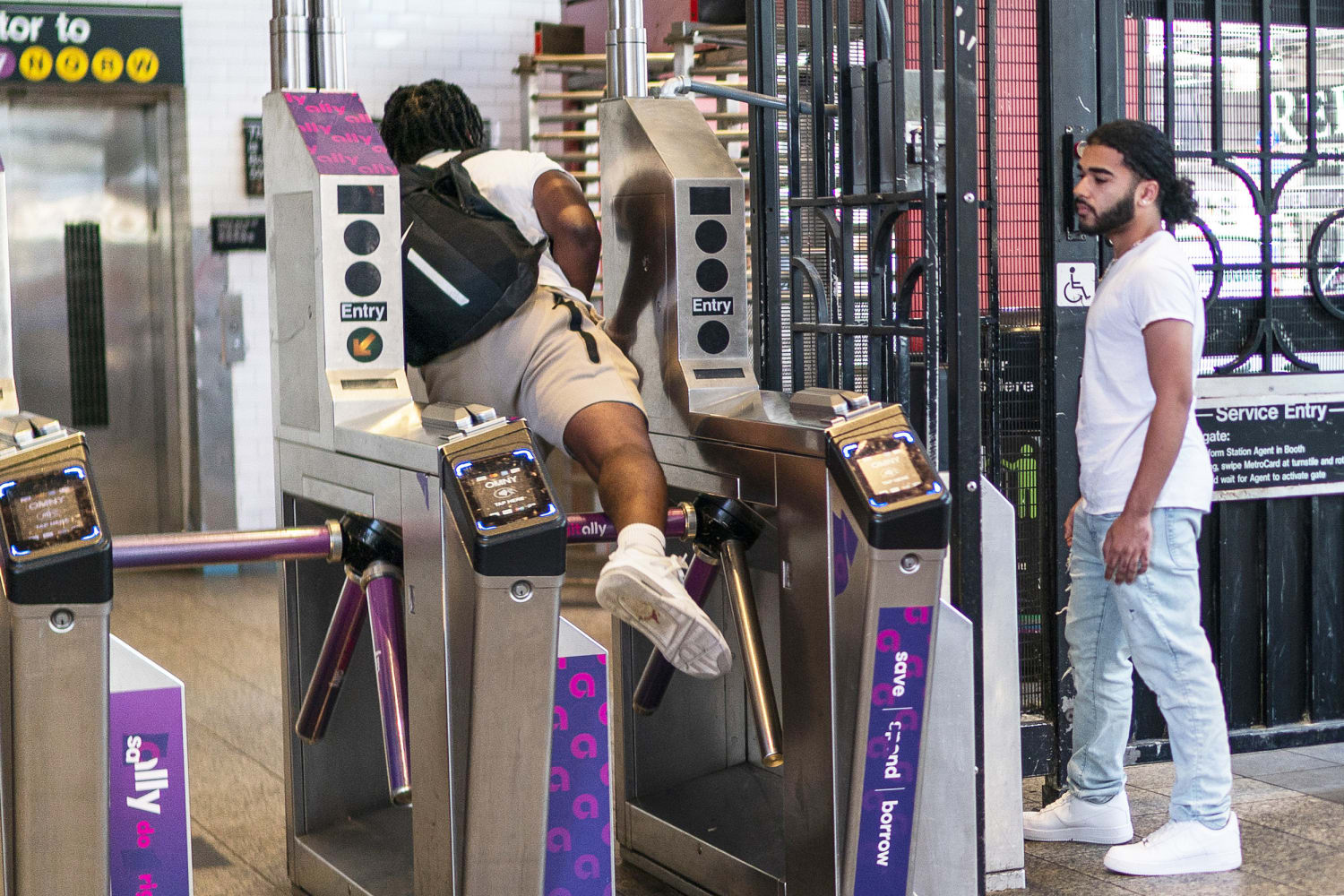Written by Kevin Collier NBC News
According to public documents and contracts obtained by NBC News, monitoring software that uses artificial intelligence (AI) to detect fare dodgers has been quietly deployed in some New York City subway stations, and is set to roll out in more by the end of the year.
The system, which was not previously recognized by the city government and its transit authority by name, uses third-party software promoted by its maker as a way to engage law enforcement to help crack down on fare evasion.
The system was in use at seven subway stations as of May, according to a fare evasion report posted online by the Metropolitan Transit Authority (MTA), which oversees New York’s public transit.
The public transit authority expects that by the end of the year, the system will be expanded with “approximately twenty more stations, with others to follow,” according to the report. The document also reveals that the MTA lost $690 million from fare evasion in 2022.
[La inteligencia artificial podría extinguir a la humanidad, advierten los expertos]
MTA spokeswoman Joanna Flores said the AI system does not report fare evaders to the New York Police Department, but she declined to comment on whether that policy could change. A police spokesman declined to comment.
Tim Minton, director of communications for the MTA, said the system tracks fare evasion to see how much money the subway fails to collect.
“Basically, we use it as a counting tool,” Minton said. “The goal is to determine how many people avoid paying a ticket and how they do it.”
Minton said the videos are stored on the MTA’s servers and are kept for a “limited period of time.” New York Gov. Kathy Hochul’s office announced last year that the city’s transit systems have more than 10,000 surveillance cameras.
Using the software adds to what some privacy advocates call a growing surveillance device being developed in New York City.
[Todo lo que debe saber sobre ChatGPT y las IA que asombran con una inteligencia (artificial) que ya casi parece humana]
“This is the time when movement around the city has never been so closely monitored,” says Albert Fox Kahn, director of the Surveillance Technology Monitoring Project, a nonprofit law firm that advocates for privacy rights in New York City.
“We’re already seeing the proliferation of automated license plate readers. We’ve seen a bunch of data about the history of Uber and Lyft. And we’re seeing tens of thousands of cameras that can be accessed by the NYPD when people walk in public,” Kahn said. “So it’s becoming more and more a city where there is no way to get around in private.”
Flores confirmed that the program was created by the Spanish company AWAAIT. AWAAIT declined to comment.
A promotional video for AWAAIT’s fare evasion programme, created by a Spanish company that runs Barcelona’s metro trains, shows a system that initially used AWAAIT to scan passengers passing through the metro and send pictures of people it identified as fare evaders to the smartphones of agents at nearby stations.
The MTA’s assurances that the software would not be used to aid law enforcement did little to reassure some privacy and civil rights advocates, who were already concerned about previous efforts to crack down on fare evasion.
[Una ‘influencer’ lanza una “novia virtual” con inteligencia artificial para “curar la soledad” y se le “rebela” para tener sexo]
In 2019, city police patrol officers were directed to spot most fare evaders rather than arrest them if they could present identification and pass checks through the Domain Awareness System, a centralized crime reporting and monitoring system overseen by the New York City Police Department’s Office of Counterterrorism.
New York has increased the number of police officers stationed in its subway stations since last year, and arrests have also risen steadily. Historically, the Police Department has arrested Black and Latino passengers for ticket evasion at a higher rate than people of other races, prompting accusations of racism.
Fee evasion enforcement often ends up targeting the poor, said Molly Griffard, an attorney with the Legal Aid Society, a law firm that works on social justice issues.
“It’s unfortunate that instead of thinking about how the city and state can make these services more available and accessible to the public, they’re spending all this time and money on enforcement mechanisms to try and get money from low-income New Yorkers,” Griffard said.
a MTA contract In the AI system drafted in July 2022, which Cahn gained access to through a Freedom of Information Act request and shared with NBC News, it shows that the system was first tested in New York City in 2020, with more stations added in 2021. The exact number of stations has been determined.
[Europa lidera en la regulación de la inteligencia artificial. ¿Por qué es importante y qué consecuencias tiene?]
GovSpend, a database of government spending records, shows that in 2021, the RTA purchased “AWAAIT Video Analytics Fare Evasion Software,” for a grand total of $35,335. 2022 numbers are not available.
Kan said the use of technology to try to track fee evasion shows flaws in institutional priorities.
“We still see this systematic criminalization of fee evasion, even though it does no harm to anyone,” he said. “And that really sounds like a scheme that pays for bad technology and bad politics.”

“Beeraholic. Friend of animals everywhere. Evil web scholar. Zombie maven.”

:quality(85)/cloudfront-us-east-1.images.arcpublishing.com/infobae/RO4GR6SA3ZCAFKIOVFARTMTNJY.jpg)


:quality(85)/cloudfront-us-east-1.images.arcpublishing.com/infobae/XPP5SGW355FWRD2BAR6VRWB6QQ.jpg)

More Stories
Chipazo lottery results: Who are the new millionaires?
The largest bank in America says goodbye to Wall Street after 150 years
Electricity price in Spain this Sunday